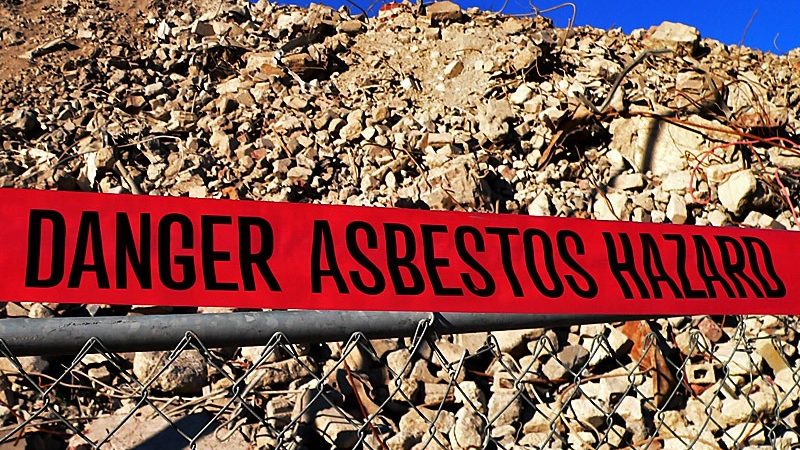Nearly 2 million people in 2016 alone were diagnosed with one form of cancer, reports the National Cancer Institute. This staggering figure includes more than 3000 people afflicted with mesothelioma. This rare form of lung cancer is directly related to asbestos in the immediate environment. Despite general perception that asbestos and mesothelioma are a burden of the past, exposure persists today especially for abatement specialists and construction workers. For this reason, it’s critical to understand what asbestos is and how it’s controlled in today’s modern world.
Learning About Asbestos
Asbestos isn’t a man-made product, and in no way shape or form ever have its properties ever been re-engineered. It’s actually an innocuous mineral found in the ground.
Because it’s found across the globe, people quickly discovered its benefits many years ago. Asbestos resists heat in many forms, which makes it a great insulator for buildings, airplanes and military ships. It’s even possible to find it in automotive parts, such as brakes.
Before it was discovered to be harmful to humans, it was heralded as an inexpensive way to build large items. The structures remained safe from fire damage as people lived and worked within them. Once mesothelioma was attributed to asbestos, it was slowly removed from widespread use.
How it Impacts the Human Body
Asbestos is an extremely harmful substance because of the tiny fibers involved in its structure. When the material breaks apart, those fibers float through the air. When people nearby breathe in the fibers they become permanently lodged in the lungs. Affected people don’t realize that there’s a problem until breathing becomes labored and a possible tumor develops in the lungs. Mesothelioma and other cancers are possible at this point.
Locating Asbestos Today
Current materials used for construction purposes no longer have asbestos fibers. It can still be found in various locations, however. Long-standing buildings hide asbestos within walls. Ceilings, floors and supportive posts may also have these fibers.
The best way to avoid any exposure to them is through research. Before any work commences on a building, the workers should know the structure’s age and building contents. If any asbestos is suspected, the workers can take the necessary precautions. Specific removal protocols, such as wetting the fibers and wearing respirators, protect the workers from any exposure.
Safe Transport
Most regions call for certified companies to haul any asbestos away from a site. If a family believes that asbestos is part of their property’s structure, it’s important to contact professionals for removal. After safe removal, the fibers are still a threat to local people. Fibers that fly away on a random breeze can impact the health of an entire neighborhood. Most professionals place the fibers into a container that’s completely sealed before transport. Asbestos cannot be mixed with other hazardous substances either. Most communities don’t support a take-back or recycling program when it comes to asbestos removal by homeowners, states the California Environmental Protection Agency. These rules ultimately protect the people in the neighborhood until the fibers can be recycled or discarded.
Recycling Options
In the past, asbestos-recycling processes were limited in scope. Processing plants may have added the fibers to concrete to essentially “freeze” the harmful substance into a permanent place. According to the U.S. National Library of Medicine, there’s a more efficient way to recycle fibers through molecular alteration.
In molecular alteration, mechanochemical processes change how the asbestos fibers react with the surrounding environment. They’re treated with chemicals to change their molecular structure. As inert fibers, the asbestos is further altered into a glass formation. It can now be used in other applications without any harm to people’s health.
Disposal Alternatives
Disposing of asbestos is still a common task for professionals. Specific landfills must be used for this purpose. The hauling company performs most of the work to wet and transport the fibers without any spills. After the materials are left at these certified landfills, it becomes their responsibility to handle the asbestos appropriately.
Each asbestos container must be buried without any damage to its structure. The containers cannot be forced into the ground. Each one takes up a specific space that must remain intact for many years to come. Because most landfills use compaction methods to control their volumes, this challenge makes asbestos-recycling processes much more attractive.
Conclusion
Although processes like ceramic moulding and molecular re-engineering are effective, they are not a large part of modern day asbestos abatement practices. Moving forward however, it’s important to recognize these environmentally friendly and effective methods as practical ways to safely re-use and abate harmful minerals like asbestos.
The MAHB Blog is a venture of the Millennium Alliance for Humanity and the Biosphere. Questions should be directed to joan@mahbonline.org
MAHB Blog: https://mahb.stanford.edu/blog/asbestos-disposal/
The views and opinions expressed through the MAHB Website are those of the contributing authors and do not necessarily reflect an official position of the MAHB. The MAHB aims to share a range of perspectives and welcomes the discussions that they prompt.
